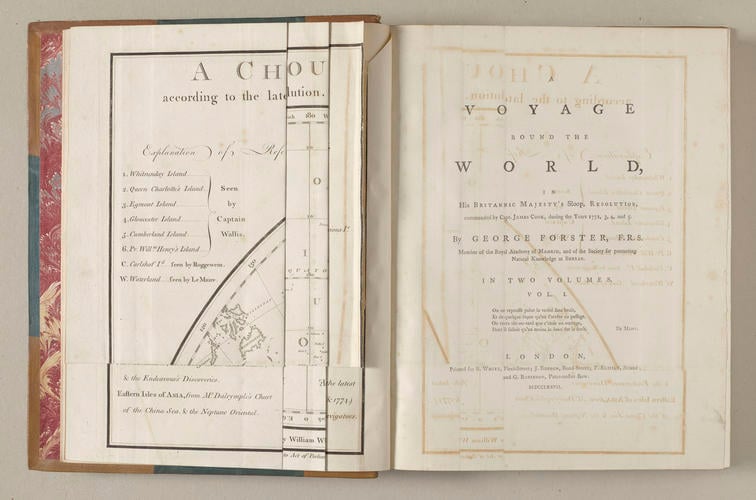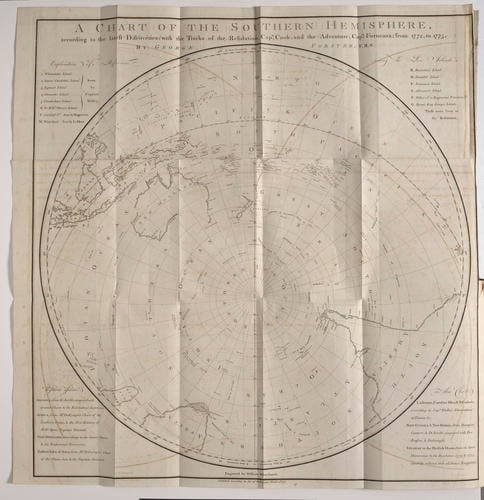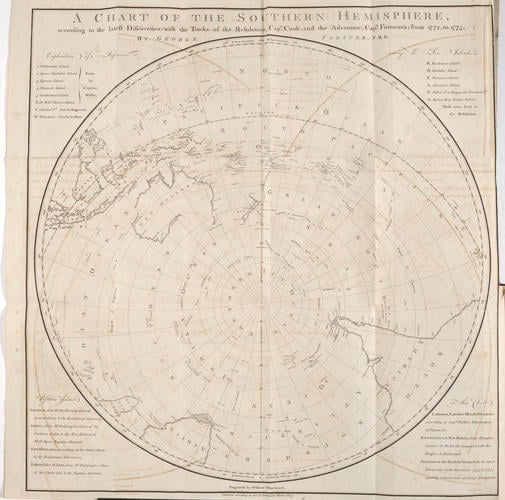-
1 of 253523 objects
A Voyage round the World in His Britannic Majesty's sloop, Resolution, commanded by Capt. James Cook during the years 1772, 3, 4 and 5 ; v. 1 / by George Forster. 1777
RCIN 1141410

Georg Adam Forster (1754-94)
A Voyage round the World in His Britannic Majesty's sloop, Resolution, commanded by Capt. James Cook during the years 1772, 3, 4 and 5 ; v. 1 / by George Forster 1777

Georg Adam Forster (1754-94)
A Voyage round the World in His Britannic Majesty's sloop, Resolution, commanded by Capt. James Cook during the years 1772, 3, 4 and 5 ; v. 1 / by George Forster 1777

Georg Adam Forster (1754-94)
A Voyage round the World in His Britannic Majesty's sloop, Resolution, commanded by Capt. James Cook during the years 1772, 3, 4 and 5 ; v. 1 / by George Forster 1777

Georg Adam Forster (1754-94)
A Voyage round the World in His Britannic Majesty's sloop, Resolution, commanded by Capt. James Cook during the years 1772, 3, 4 and 5 ; v. 1 / by George Forster 1777




-
This is a copy of the observations made by Georg Adam Forster (1754-94), a German scientist who accompanied Captain James Cook's second voyage to the Pacific. Forster, accompanied by his father, Johann Reinhold Forster (1729-1798), was selected to join the expedition following a disagreement between Joseph Banks and the Royal Society. The observations made by both Forster and his father were invaluable in European understandings of Pacific Islander life and the botany and geography of this hitherto unknown region ,and the German translation of this work brought the Pacific to the attention of a wider European audience.
Cook's second voyage was the voyage that cemented his reputation as a navigator. Although the Endeavour voyage of 1769-71 confirmed that New Zealand was an archipelago and charted the east coast of Australia, some members of the Royal Society still believed in the existence of a Terra Australis incognita, an unknown southern continent. Cook was commanded to find this continent in a new expedition with the ships HMS Resolution and HMS Adventure.
The ships left Plymouth in July 1772 and sailed towards the Antarctic Circle, crossing it for the first time in January 1773. Antarctic fog and sea-ice separated the two ships in February and both sailed to a rendezvous in New Zealand that had been charted by Cook three years previously.
On the way to New Zealand, the Adventure, commanded by Tobias Furneaux, surveyed the southern coast of Van Diemen's Land (now Tasmania) before reaching the rendezvous in mid-March 1773. Cook arrived with the Resolution in May 1773. From June, both ships sailed across the South Pacific, making stops at Tahiti, Ra'iatea and Tonga before returning to New Zealand where the Adventure made for home. At Ra'iatea, the expedition picked up a young Polynesian man named Mai (or Omai) who travelled with the Adventure to London, arriving in November 1774. Mai spent two years in London where he was much admired and was introduced to many influential figures of the age, including George III. Cook returned him to Ra'iatea in 1777. Mai's time in London is problematic, he appears to have been brought back to Britain as a curiosity, a living example of the idea of the 'noble savage' which was popular in Europe at the time. Pacific Islanders were seen as living idyllic lives compared to the busy industrial lives of Europeans. This perception of the Pacific as a 'paradise' continues to persist, but these ideas neglected the complexity of Islander societies and the often violent nature of politics among different communities in the Pacific.
After the departure of Adventure, Cook left New Zealand in order to further explore the Antarctic Circle. Resolution made two more penetrations into the sea-ice but was forced to return northwards in late January 1774. Cook then made several further sweeps of the Pacific, making stops at Easter Island (Rapa Nui), Tonga and several other islands and atolls across the ocean.
Cook's achievements were admired by many in Europe and, following his death on Hawai'i during his third voyage to the Pacific, he was regarded as a national hero in Britain and the wider British Empire. However, the legacy of his encounters with Indigenous populations across the Pacific and the subsequent colonisation of the region by Europeans continues to be debated.Provenance
Re-bound by Riviere in the mid-nineteenth century. Probably one of the set listed in the catalogue of the personal library of George III at Cumberland Lodge.
-
Creator(s)
(publisher)(publisher)(publisher)(binder) -
Other number(s)
ESTC : English Short Title Catalogue Citation Number – ESTC T155479